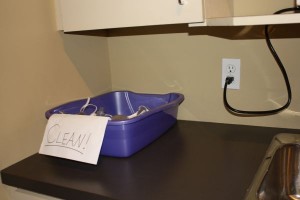A source of livelihood for some, fishing is a common recreational
sport all over the world. People enjoy going to lakes with their fishing rods and attaching worms or a small piece of bread on their hooks as baits to attract fish. Although they are all curved, sharp instruments, placed on a line, there are different sizes, shapes and designs of fish hooks. Some have a barb placed on the tip of the hook to keep the fish on the hook. However, their unanimous function is to catch fish. A fish hook works by catching fish either by piercing through their mouth or, more infrequently, by ripping through the body of the fish.
Interestingly, even the most careful fishers can get a fish hook in the skin, and having a barb on the tip may just increase the chances of a fish hook injury. Often, fish hook injuries occur while removing a slippery, flopping fish from the line. Nonetheless, injuries also occur while casting a line or walking barefoot near fishing devices. Most of the injuries are located on the skin of the face, scalp, fingers, back, ears, and mostly upper body. Fish hook injuries are rarely serious, and more often cause penetration of the tissues. Most of these injuries are considered minor can be treated with first aid. First aid classes are offered by St Mark James which more than just informs people of how to administer proper treatment but practical application of skills.
Before attempting to remove the fish hook, there must be careful examination of adjacent tissue. There will most likely be bleeding, pain and localized swelling. If the barb has not penetrated the skin, the tip of the hook should be pulled opposite of the direction it entered. If not, there are two methods that can be performed to dislodge a superficially embedded hook, namely fish line method and wire cutting method.
To do the fish line method, the rescuer must first wash both hands with water and soap or disinfecting solution to minimize risk of infection. The surrounding area of the injury should also be washed. Place a loop of fish line through the bend of the hook in order to rapidly jerk the hook which can be pulled out straight in line with the shaft of the hook. While holding onto the shaft, gently push the hook downwards and inwards (opposite from the barb)to unfasten the barb. Keeping the pressure constant to keep the barb unfastened, give a rapid jerk on the fish line and the hook will be removed. Thoroughly wash the wound with soap and water. A loose, sterile dressing should be applied.
Similar to fish line method, the wire cutting method requires that the hands be cleaned and so does the surrounding area. After doing
this, apply slight pressure along the curve of the hook while at the same time pulling on the hook. Pull the tip through the skin, cut it off behind the barb with wire cutters and dislodge the rest of the hook by pulling it back through the way it went in if the tip of the hook is found near the surface of the skin. After successfully removing the hook, thoroughly was the wound with soap and water. A loose, sterile dressing should be applied.

